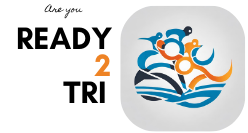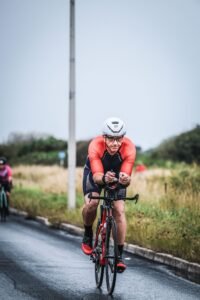It is really important that as you embark on a successful weight loss journey you should feel your current weight is or maybe causing you physical health issues or is having a negative impact on your mental health that you consult with a health professional. I am not a health professional and my blogs contain information about me, my journey and what has worked for me. Where I have stated something as ‘fact’ I have referenced the source of the information. If you do not see a source in any of my posts you should consider it to be my unqualified opinion.
Welcome back to the next chapter of our successful weight loss journey. If you’ve followed along from Part 1, you’ve taken a brave step toward understanding your motivations and acknowledging the real-world impact of your physical self-perception. Now, let’s delve into the ‘How to lose weight’ and debunk some common myths surrounding weight loss.
Dispelling Some Common Myths:
The internet and social media are full of diet myths and ‘get thin quick’ scams. I have listed below my top 7.
Myth 1: it’s hard to lose weight.
Reality: It isn’t hard to lose weight, but if not done in the right way it can be hard not to put weight back on again
Myth 2: Crash diets are the answer.
Reality: While they might promise quick results, sustaining them is unsuccessful, consistency is the key
Myth 3: Intense exercise is the only way.
Reality: A balanced approach combining nutrition and exercise is key.
Myth 4: Heathier foods are more expensive.
Reality: I can and have fed myself for a week for the cost of a take-away.
Myth 5: If you are not hungry you can’t be losing weight.
Reality: You can lose weight, as I did, without ever feeling hungry.
Myth 6: If you eat less calories than you burn you will lose weight.
Reality: It depends upon the period that you are measuring, over the long term this may prove true but on a day-to-day basis our weight can fluctuate quiet a lot. It’s important to understand this to help us stay motivated.
Myth 7: You must cut out all your favourite foods.
Reality: Moderation is the key to long-term success.
Do’s & Don’ts
Our plan to lose weight and certainly my plan, was based upon a series of do’s and don’ts. Throughout this series of blogs we will look into each in more detail, however I feel sure you are keen to just get on with it. So for now I have listed my top eight don’ts and do’s, that worked for me.
Don’t – Diet “What!!!!”
Do – Make small changes and allow them to become habits
Don’t – Listen to others “oh, you shouldn’t be eating that” or “go on, one won’t hurt”
Do – Make you accountable to you
Don’t – Put yourself in a position where you feel hungry all the time
Do – Eat for volume
Don’t – Grab whatever you can the moment you feel peckish (or even just bored)
Do – Drink more fluids, water and sugar free cordials
Don’t – Drink your calories
Do – Be very aware of how many calories are in what you drink and ask yourself would you prefer to be eating those calories or drinking them?
Don’t – Place all your trust in calorie counters and calorie burners (food loggers and smart watches)
Do – Although it appears slightly contradictory, do use calorie counters and calorie burners, but assume they are at best consistently inaccurate
Don’t – Guess
Do – Weigh, measure, monitor and record everything. Make your weight loss journey your own personal experiment.
Don’t – Give up the first time something goes against you
Do – Build up resilience, which will turn into self confidence
Activity 2 – Lets get started – Know where you are today
Step 1 – Gather what you need
Something to weigh yourself – I use Salter scales
Something to weigh your food – I use Salter digital kitchen scales
Something to measure the calories you eat – I use my fitness pal
Something to monitor the calories you burn – I use my apple watch
Somewhere you record all of the information – I use Microsoft Excel, but you can use any spreadsheet or even a note book
Step 2 – Start to measure you
First thing in the morning after you have been to the bathroom but before you have had anything to eat, or drink weigh yourself. Try to be as consistent as possible, as in always use the same area of the floor to place the scales and always wear the same amount of clothes. Ideally it would be better if you can weigh yourself naked, as this removes clothing as a variable.
At the start the clothes we wear may not matter as initial results tend to be quite big, but as you progress what you wear when you are weighing yourself can be the difference between a measurement that says you have lost or gained weight. The key (as with everything in weight loss) is consistency.
Step 3 – Start to measure all of your food and drink
Measure out all of your food. At the beginning this can feel a bit time consuming, but it does speed up over time. Measuring your food will probably have one of the biggest impacts on weight loss. We may think that we know how much of something we are eating but often we under or loss often over estimate how much something weighs. As an example at the start, lets say you were having porridge oats and toast for breakfast and a home made cappuccino;
- Put your bowl on the scales and without looking at the measurement pour in your usual amount, then look at the weight and record it.
- Pour into a measuring jug the usual amount of milk that you would have and record it.
- Set the scales back to zero and if you add sugar, weigh it and record it.
- If you have two pieces of toast, weigh the bread and record it.
- If you put spread on the toast, weigh it and record it.
- Record the cappuccino making sure you record the correct amount and type of milk i.e. 1 * Espresso and 200 ml of semi skimmed milk.
Record every meal and every snack and every drink. This is where apps such as My Fitness Pal are very helpful they contain most of the foods that you will come across and to speed up the process you can even scan the barcode of the food you are eating.
Step 4 – Start to measure your activity
Before you start to use your smart watch or fitness tracker it is important to ensure that it has up to date information about you. It will need to know, your current height, weight and gender as a minimum as it will use this to determine how many calories you burn through just doing your normal activity, such as walking about, going up and down stairs and just functioning as a person. We will look into this is more detail in a future post.
Each day look at your fitness tracker or watch and record the total calories burned from the day before.
Do all of this without changing anything else. Don’t eat less than usual, don’t eat more. Don’t change your habits, just record everything to give us the best possible honest information of where we are starting from.
Step 5 – Repeat
Do steps 2 -4 every day for a week. Once you have done this you will be ready to move on to Part 3 of our weight loss journey.
Conclusion:
As we wrap up Part 2 of our weight loss journey, it’s crucial to emphasize the importance of seeking professional advice if at any stage you believe your weight is impacting your health, physically or mentally.
You’ve taken strides in understanding your motivations, dispelling common weight loss myths, and initiating practical steps to measure your journey. Weight loss is a personalized expedition, and in the next part, we’ll explore the ‘Why, What, and How’ of setting meaningful goals. Remember, consistency is key and resilience can lead to increased self-confidence. If you’ve followed the steps diligently, you’re now equipped with the information needed to progress into Part 3, if you missed Part 1, don’t worry just jump there now and complete the 1st activity. Well done, and best of luck on your continued journey to a healthier, happier you


[…] Part 2 we will start to look at the ‘How to lose weight’ based upon my own experience and list […]